
Limburg an der Lahn is the district seat of Limburg-Weilburg in Hesse, Germany.

The Lahn is a 245.6-kilometre-long (152.6 mi), right tributary of the Rhine in Germany. Its course passes through the federal states of North Rhine-Westphalia (23.0 km), Hesse (165.6 km), and Rhineland-Palatinate (57.0 km).

Idstein is a town of about 25,000 inhabitants in the Rheingau-Taunus-Kreis in the Regierungsbezirk of Darmstadt in Hesse, Germany. Because of its well preserved historical Altstadt it is part of the Deutsche Fachwerkstraße, connecting towns with fine fachwerk buildings and houses. In 2002, the town hosted the 42nd Hessentag state festival.
Selters is a mineral water brand.
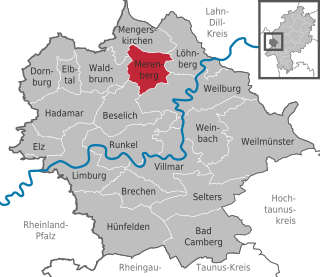
Merenberg is a municipality in Limburg-Weilburg district in Hesse, Germany.

Bad Camberg is, with 14,200 inhabitants, the second largest town in Limburg-Weilburg district in Hesse, Germany, as well as the southernmost town in the Regierungsbezirk of Gießen. It is located in the eastern Taunus in the Goldener Grund some 30 km north of Wiesbaden, 18 km southeast of Limburg an der Lahn, and 44 km northwest of Frankfurt, as well as on the German Timber-Frame Road. Bad Camberg is the central community of the Goldener Grund with good infrastructure, and a lower centre partly with a middle centre's function.
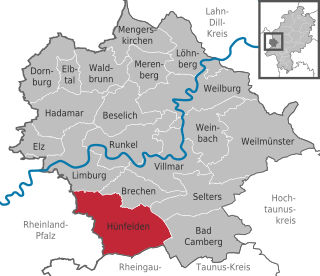
Hünfelden is a municipality in Limburg-Weilburg district in Hesse, Germany. Hünfelden lies on the Hühnerstraße, an historic part of Bundesstraße 417.
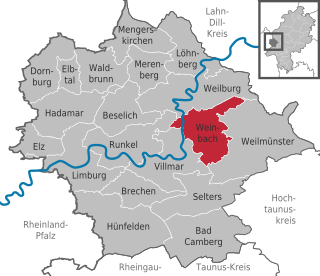
Weinbach is a municipality in Limburg-Weilburg district in Hesse, Germany.
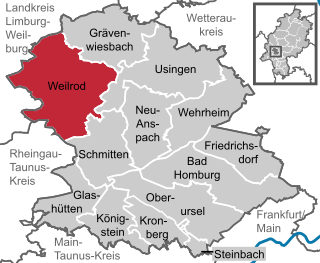
Weilrod is a municipality made up of several villages in the northwest Hochtaunuskreis lying in the Weil Valley in Hesse, Germany.

Runkel is a town on the river Lahn in Limburg-Weilburg district in Hesse, Germany.

Weilmünster is a municipality in Limburg-Weilburg district in Hesse, Germany.

Beselich is a municipality in Limburg-Weilburg district in Hesse, Germany.

Brechen is a municipality in Limburg-Weilburg district in Hesse, Germany.
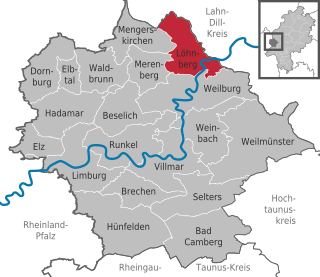
Löhnberg is a municipality north of Weilburg in Limburg-Weilburg district in Hesse, Germany.

Selters is a village in the district Limburg-Weilburg, Hesse, Germany. It is situated at the Taunus side of the river Lahn and belongs to the municipality Löhnberg. The village has a total population of 319.

Elbtal is a municipality in Limburg-Weilburg district in Hesse, Germany.

Mengerskirchen is a municipality in Limburg-Weilburg district in Hesse, Germany.

Villmar is a market village and municipality in the Limburg-Weilburg district in Hesse, Germany. The community is the centre for quarrying and processing the so-called Lahn Marble.
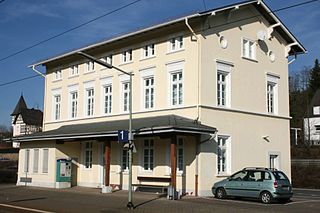
Oberbrechen station is a station on the Main-Lahn Railway, which runs from Frankfurt (Main) Hauptbahnhof to Limburg (Lahn), in the Brechen suburb of Niederbrechen in the German state of Hesse. With Niederbrechen station, it is one of two stations in Brechen. The station is in the network of the Rhein-Main-Verkehrsverbund (RMV) and is classified by Deutsche Bahn as a category 6 station and has two platform tracks.

Niederselters station is a station on the Main-Lahn Railway, which runs from Frankfurt (Main) Hauptbahnhof to Limburg (Lahn), in the Niederselters suburb of Selters in the German state of Hesse.




























